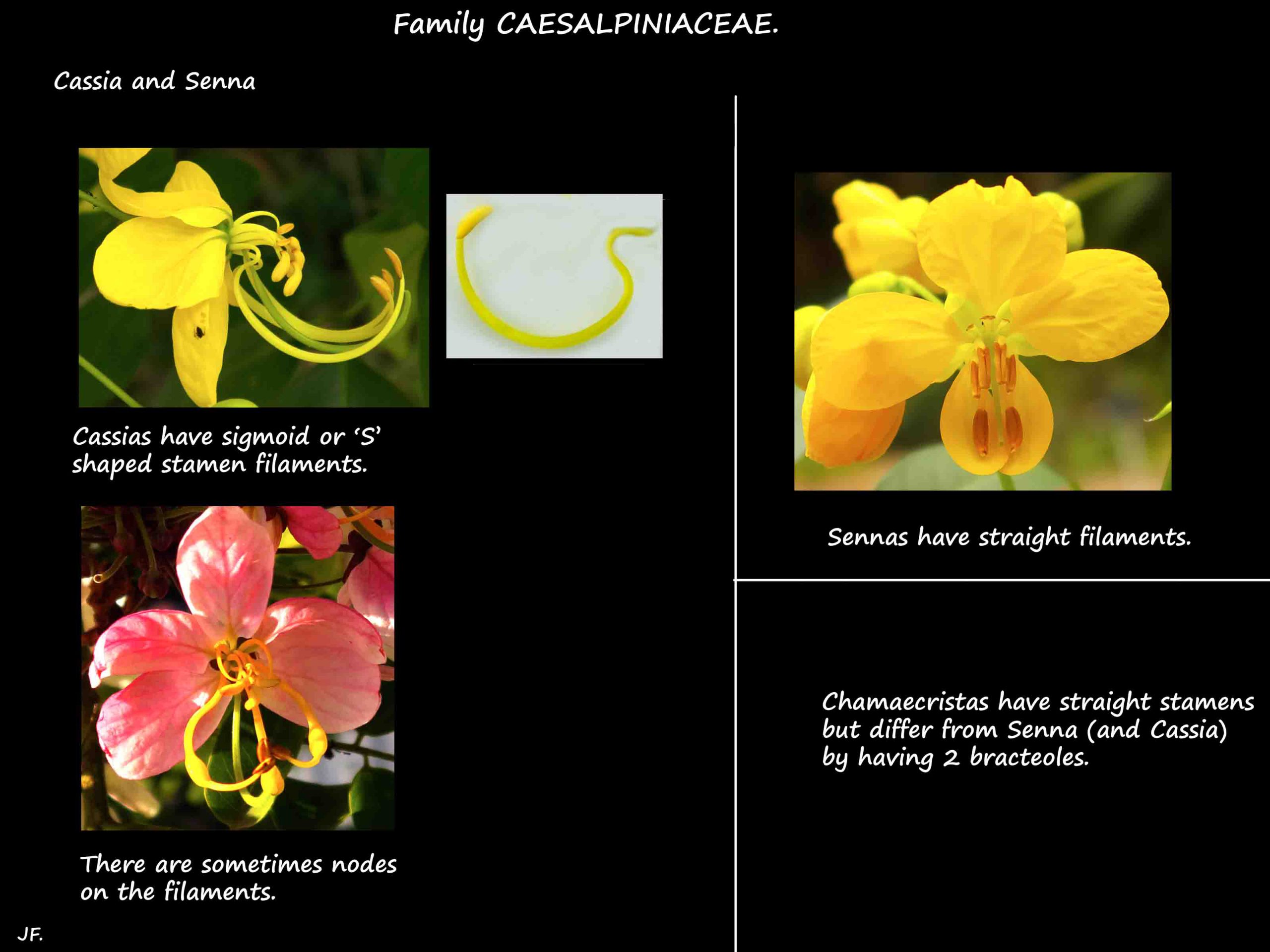Senna.
Family Caesalpinaceae (or Family Fabaceae s.l. > Subfamily Caesalpinioideae).
Until the early 1980’s Cassia, loosely defined or s.l., was a large genus of over 600 species.
It was then divided into three genera – Cassia, Senna and Chamaecrista.
All 3 genera are plants without thorns and with pinnate leaves with opposite pairs of leaflets.
They have 5 petals and 5 to 10 stamens that are free or just joined at the base.
The pollen sacs (theca) on the anthers open via pores or short slits.
If the 3 long stamens filaments have an ‘S’ shaped curve they are CASSIA.
If the filaments are straight or a simple arcuate curve they are either Senna or Chamaecrista.
If the pollen sacs are hairless and the pods are indehiscent or do open but without the sections coiling up they are SENNA.
If there is a marginl fringe of minute hairs on the pollen sacs and the pod sections coil up they are CHAMAECRISTA.
(From Flora of Australia Vol 12 pages 78 – 80.)
Many species have been moved between the genera and the same plant can still be seen under 2 or even 3 of the genera.
Senna.
There are up to 350 species from South America, Africa and Australia.
Many of these have been cultivated around the world and some have become weeds.
They are mostly shrubs and small trees with some herbs.
They may or may not have hairs and they do not have spines or thorns.
The alternate leaves are pinnate with a few up to 25 pairs of leaflets.
Some have 1 or more glands on the leaf midrib between the lowest/lower leaflets.
There are stipules that fall off early.
Inflorescences are terminal or axillary spikes of flowers.
There are bracts and the mostly yellow flowers have parts in 5’s.
The sepals are often of different sizes.
The petals are usually hairless but there may be some on the outer surface.
Some species have extrafloral nectaries on the leaf or flower stalks.
There are almost always 10 stamens some of which may be reduced to staminodes.
The stamens are free and may be of different lengths.
They can be straight or curved in a simple arc.
The basifixed anthers, sometimes with a beak, open via apical pores.
The flattened, curved ovary has a short style and a tiny stigma.
The fruit are pods that may be dehiscent or indehiscent.
The several seeds are sometimes separated by septa.
J.F.


